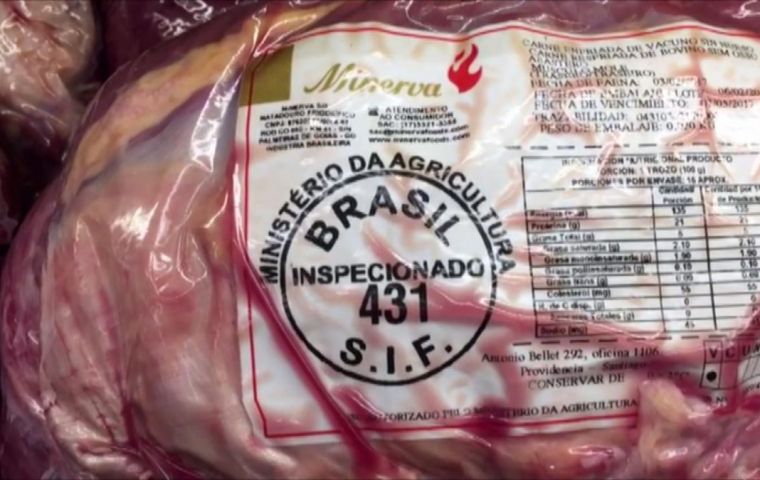A COVID-19 outbreak in a Cargill plant at High River, Alberta has shut down almost half of Canada’s beef supply, leaving many farmers with no place to sell their cattle. Nearly all beef produced in Canada is processed by three high-volume, high-throughput meat packing plants: Cargill’s High River facility, the JBS plant in Brooks, Alberta and the smaller Cargill plant in Guelph, Ontario. The two Alberta plants have 85% of Canada’s beef slaughter capacity and both are now grappling with COVID-19 outbreaks. While this choke point gives US-based Cargill and Brazilian JBS tremendous power over both cattle prices paid to farmers and the grocery store beef prices paid by consumers, the pandemic outbreaks show it is also one of the weakest links in Canada’s food system.
This week a major COVID-19 outbreak in Cargill’s Alberta plant and a smaller outbreak at the JBS plant have required slow-downs at the JBS plant and a shut-down of the Cargill facility to protect the health of plant workers and the wider community. This also has a domino effect through the food system. Demand for cattle has collapsed, and if supplies dwindle, retail beef prices will likely rise. Without intervention, the price difference between the price of cattle and grocery store beef will end up harming both farmers and consumers while enhancing the already large profits of JBS and Cargill.
“Excessive concentration of ownership and centralization of beef processing, supported and encouraged by our federal and provincial governments, has now put the health of workers, the beef supply and the livelihoods of thousands of farmers in jeopardy,” said Iain Aitken, National Farmers Union (NFU) member and Manitoba beef producer. “We extend our heartfelt condolences to the loved ones of the Cargill worker who lost her life to COVID 19.”
“Farmers need emergency support so we can take care of our livestock until the plants ramp up again. Health and safety come first, but you can’t tell the cows to stop eating and growing until the crisis is over,” said Ian Robson, Deleau Manitoba mixed farmer and NFU Board member. “We need a price floor to make sure that Cargill and JBS don’t take advantage of this crisis to reduce prices. Today’s government must not make the same kind of mistakes as during the BSE Mad Cow crisis when the giant packers pocketed support program money and put hundreds of family farms out of business.”
The NFU also urges emergency support to lay the groundwork for a more resilient and fair meat sector in Canada.
“The NFU’s vision is for a food policy based on food sovereignty,” said Tim Dowling, grassfed beef producer from the Kingston, Ontario area. “Our food system would then support more family farmers providing more food for more Canadians by focussing on building up our capacity to serve local and regional markets across the country.”
In 2008 the NFU published a comprehensive study of Canada’s cattle industry, analysing the development meat packing companies’ concentration, the impacts on cattle prices for farmers, and offering solutions that would reorient the system towards a more resilient beef sector. Its recommendations are more valid than ever today.
“The COVID-19 crisis is a wake-up call and an opportunity to rebuild our economy in ways that work for people, and which have the resilience to manage the crisis conditions that will undoubtedly occur in the future,” concluded Aitken.
For the complete NFU cattle report, please visit The Farm Crisis and the Cattle Sector: Toward a New Analysis and New Solutions
– 30 –
PDF Concentration of meat packing makes Canada’s food system vulnerable
April 22, 2020
Meat packing concentration makes Canada’s food system vulnerable
The National Farmers Union (NFU) offers heartfelt condolences to family and friends of the Cargill beef packing plant worker who lost her life to COVID-19 on April 20.
The COVID-19 pandemic is revealing many vulnerabilities in Canada’s food system. The excessive concentration of ownership and centralization of beef processing has put the health of workers, the beef supply and the livelihoods of thousands of farmers in jeopardy.
As of April 21, Cargill is finally idling its plant at High River, Alberta after one death, at least 358 cases ofCOVID-19 among workers and about 150 more confirmed cases related to the Cargill plant through
family and community spread. There is also a COVID-19 outbreak at the JBS meatpacking plant in Brooks, Alberta area, where 67 people have tested positive.
Cargill’s Alberta plant normally slaughters and processes 4,500 head of cattle per day, which is nearly half of Canada’s total beef processing capacity. The JBS Brook’s facility’s daily beef slaughter capacity is 4,200 head per day The Cargill beef plant in Guelph, Ontario has a slaughter capacity of 1,500 head per day.
Nearly all of the beef sold in Canadian grocery stores and exported from Canada comes from these three high-volume, high-throughput meat packing plants. Cargill’s High River facility, the JBS plant in Brooks, Alberta and the Cargill plant in Guelph, Ontario together process over 95% of the beef in Canada, as well as nearly all of Canada’s $3 billion worth of beef exports. Cargill, with headquarters in the USA, is the world’s largest private company. In 2018 the family members that control Cargill Inc. got $643 million in the company’s the biggest payout since 2010, according to Bloomberg. JBS is a Brazilian corporation and the world’s largest meat company. Its net profit in 2018 was nearly $US 50 billion, a 10% increase over the previous year. These two foreign-owned companies completely dominate Canada’s beef sector.
Canada has just 17 other federally licenced beef slaughter facilities, all small and many serving specialized markets. The provinces of New Brunswick and Nova Scotia have no federally licenced abattoirs for beef. Prince Edward Island and Saskatchewan each have one facility; BC and Manitoba each have just two, all of them are small. There are also provincially licenced abattoirs, which in 2019 slaughtered a total of 153,859 head of cattle, the equivalent of 15 days of output from the threelargest federally inspected plants.
JBS and Cargill control the flow of beef through Canada’s food system and to export markets. Their three processing plants form a choke point that gives them undue influence over the price of cattle paid to farmers and the price of beef paid by consumers in the grocery store. While this choke point gives Cargill and JBS tremendous power, it is also one of the weakest links in Canada’s food system.
Slow-downs and shut-downs necessary to protect the health of plant workers also have a domino effect on cattle producers. Farmers expecting to sell their livestock find demand has collapsed. Prices are falling and farmers are faced with selling well below the cost of production or continuing to feed and care for cattle while waiting for an opportunity to sell. Meanwhile if grocery store supplies dwindle, retail beef prices will likely rise, especially if JBS and Cargill raise their wholesale prices. The price difference between what farmers are paid and what consumers pay for their meat will be captured by the big retailers and/or JBS and Cargill, to enhance these companies’ already large profits.
Health and safety for workers and the public must come first. The failure of Cargill and JBS to implement changes to permit safe operations during the pandemic is creating a larger crisis in the food system in addition to its health impacts. Farmers now require emergency support to allow them to continue feeding cattle that no longer have a market.
Price floors must be put in place to ensure Cargill and JBS do not take advantage of this crisis to reduce prices they or their captive feedlot suppliers payfor cattle. The lessons of the BSE crisis must be applied to ensure that the giant packers do not take all the value of government support programs for themselves. Any emergency support for farmers and ranchers coping with the precipitous drop in demand must meet the needs of cow-calf producers, and independent feedlots and backgrounders.
The NFU also urges emergency support be designed to lay the groundwork for a more resilient and fair meat sector in Canada.
In 1988 there were 119 federally inspected beef packing plants in Canada, all were 100% Canadian owned. For the past three decades, Canadian governments have measured success in agriculture by export volumes. The measuring stick is Canada’s share of global exports – not the quality and value of food being produced for Canadians, the livelihoods of Canadian farmers, nor the prosperity of rural communities. The pursuit of maximum exports has resulted in a corporate beef sector that extracts all it can from workers, farmers, tax-payers, consumers and agricultural ecosystems.
The National Farmers Union advocates for a food sovereignty-based food policy for Canada that would promote more high-quality food produced by Canadian ranchers and farmers on the tables of families across the country. A key strategy to achieve this would be developing domestic markets and localized distribution systems with direct, fair and transparent distribution chains.
In 2008 the NFU published a comprehensive study of Canada cattle industry, analysing the development meat packing companies’ concentration, the impacts on cattle prices for farmers, and offering solutions that would reorient the system towards a more resilient beef sector. Its recommendations include:
Create and implement a national meat strategy to better serve the economic, nutritional,
social, community development, food production, and environmental goals of Canadians in all regions.
Shift the location, ownership, and conduct of our beef packing plants to reduce its geographic concentration (nearly all capacity is currently in southern Alberta) and ownership concentration, so that our packing plants are spread across the nation, focused on serving local and regional markets, under diversified ownership and providing meat of the highest possible nutrition and safety.
Ban captive supply – feedlots owned or controlled by JBS and Cargill which they use to depress prices paid to producers.
Tailor food safety regulations to encourage local abattoirs to develop Canadian markets for organic beef, grass-finished beef, bison, and other specialty livestock and that create high-value deli meats and processed foods.
Recognize that dispersed local abattoirs with shorter supply chains are also key to reducing greenhouse gas emissions from our meat production system.
These recommendations are more valid than ever today. The COVID-19 crisis is a wake-up call and an opportunity to rebuild our economy in ways that work for people, and which have the resilience to manage the crisis conditions that will undoubtedly occur in the future.
| 















